The kitchen is the most passable and often polluted place in the house. And if you have never had a carpet or a palace here, then surely you doubt whether it is needed here, whether it is possible to keep it clean without spending a lot of effort, and whether this beautiful dust collector is harmful to health. ? We answer - the carpet in the kitchen is needed in order to:
- Protect the floor of stone or wood from damage;
- Make cold tile floor or laminate flooring more comfortable. This is especially important if there is a child in the family - the carpet will not allow him to slip or freeze;
- Split the kitchen kitchen-living room or kitchen-dining room areas, for example, working and dining, or kitchen and recreation area;
- Visually expand, lengthen or vice versa - make the space chamber;
- Soundproof the room;
- Make the interior stylish and comfortable.
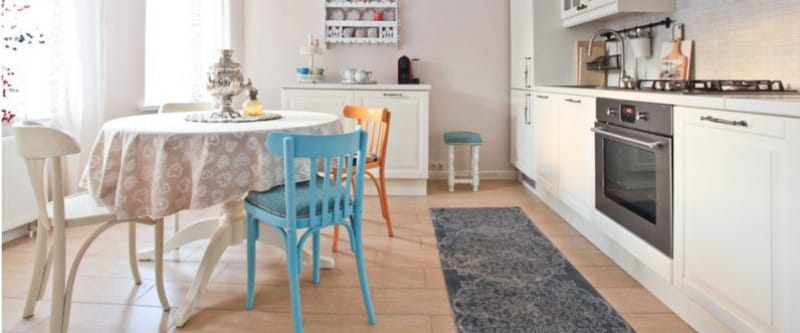
As for practicality, it all depends on the material of the carpet. If you choose it correctly, you will be surprised how easy it is to care. Moreover, with a carpet the kitchen becomes even cleaner and tidier. And the property of carpets to collect dust is actually not a minus, but a plus. After all, if it is not kept in the carpet, and then cleaned with a vacuum cleaner, it will “hang” in the air we breathe.
This material will help you choose a non-marking and high-quality carpet using 5-step instructions and a selection of 50 beautiful photos.
Step 1. Decide where you want to lay the carpet in the kitchen
Carpet can be laid in at least 3 places:
- At the sink - This is the place where you most often go and stand for a long time. Here the rug should be small, approximately 60 × 90 cm in size.
- Along the kitchen set, i.e. the working area - for example, between a headset and a dining group or an island. At this point, narrow and elongated tracks or small rectangular covers look best.
- In the dining area - in this case, the size of the cover should be such that its edges do not bully when shifting chairs during lunch. You can calculate the minimum dimensions of a carpet simply by adding at least 60 cm to the length of each side of the table. Most often, 230 × 300 cm, 240 × 330 cm or 250 × 350 cm are suitable for the dining area.
The next slider presents photo examples of various options for placement of carpets and palaces in the kitchen.
Step 2. Take measurements
Now, when the place is chosen, mark on the floor the outline of the future carpet in the desired size using scotch tape. So you get its indicative parameters and you can make sure that the carpet will not intersect with other pieces of furniture.
Step 3. Decide on the form
The main principle of the choice of form is simple: the shape of the carpet should repeat the shape of the table. That is, if oval table, then the carpet is better to choose oval. So you will achieve a sense of order in space.However, if you wish, you can choose:
- For a round table - a round or square carpet.
- For a rectangular table - a rectangular or oval carpet.
You can navigate to the shape of the kitchen. If the room has elongated rectangular shape, then the carpet should choose the same. If the room is square, then fit round or square cover.
However, all these recommendations can be ignored if you choose a large carpet for the dining area in a very spacious kitchen or dining room.
Step 4. Choose a material
Since situations where you spill or spill something in the kitchen are inevitable, the carpet here should be made of a material that can be easily cleaned in a dry and wet way. The most practical carpets are woven from:
- Wool - the most traditional and common option. Wool is warm, pleasant to the touch and easy to clean. High-quality wool carpet factory production will be able to serve 20-50 years. However, its pile easily absorbs liquid contaminants, such as food contaminants, and removing stains from it will not be so easy. In addition, keep in mind that wool, so even with small crumbs and food stains, attracts moths. Another disadvantage is that woolen carpet can accumulate static electricity (however, it is much less than synthetic coatings). All these disadvantages can be deprived of products treated with dirt-repellent, anti-salt and antistatic impregnations.
- Nylon (Polyamide) - Of all synthetic materials, nylon is closest to wool and in appearance and in performance. Nylon carpets are practical and durable, the only negative - fade in the sun. For the price they are comparable to woolen products.
- Polypropylene (dekolana, ikselana) - more affordable, and therefore a popular option. Polypropylene carpet is perfect for the kitchen, as its smooth fibers are resistant to the absorption of moisture, including liquid food contaminants such as wine. Service life is 5–7 years. High-quality polypropylene carpet must have a high density, then the pile will not be wrinkled.
Silk, cotton, viscose and polyester coverings will withstand a little worse. And really do not recommend buying products from acrylic.
From whatever material you choose a carpet, the main thing is that it should be lint-free or short-haired, but by no means long-haired or loop-back.
Lint-free carpets are more like cloth with dense and sometimes coarse weaving. It can be double-sided canvas, mats made from plant materials or synthetics, as well as kilim and sumac carpets. These rugs are just suitable for registration of the working area - near the sink or along the headset. However, with mats of woven sisal, bamboo, jute, flax, etc., you need to be careful, because they are afraid of moisture. However, the rest of the kitchen pollution they tolerate well, if they have a dense and smooth weaving.
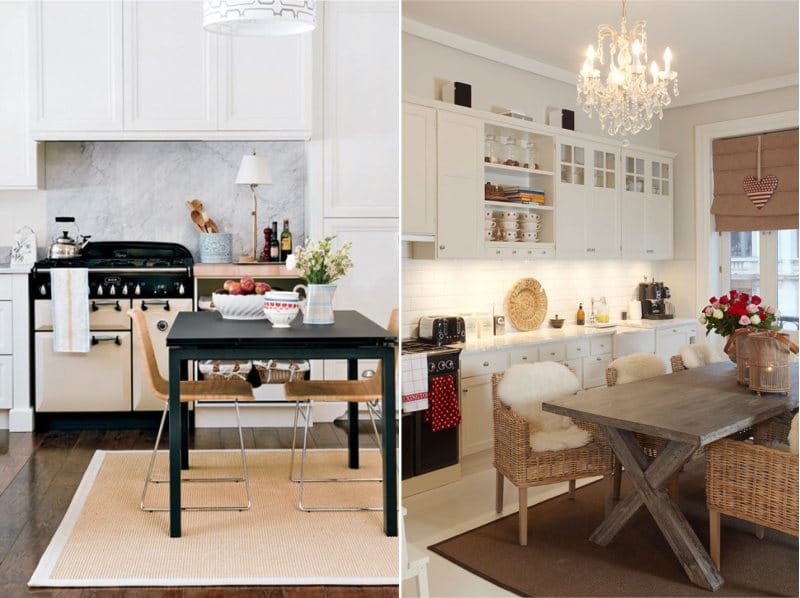
Step 5. Determine the color and design
Here are a few tips to help you decide on the design and color of the carpet.
- The pattern and colors should overlap with the rest of the interior. For example, with curtains, furniture, wall decoration, wallpaper, apron or floor tile.
- The darker the coating, the less it is labeled.
- Crumbs and other contaminants will be hardly noticeable on a carpet with a motley pattern, for example, on the same palaces or kilims.
- If the kitchen is narrow, then with the help of a carpet in a transverse strip, zigzag, wave, etc., you can visually expand the space.
And a bit of care
Finally, when you buy a carpet, the following care tips will come in handy:
- First of all, a freshly bought carpet, and especially a carpet or rug, must be fixed on the floor using ordinary double-sided tape, special rubber tapes or stickies to fix the carpets. You can also just sew a few rubber rings or just pieces to the inside of the carpet.
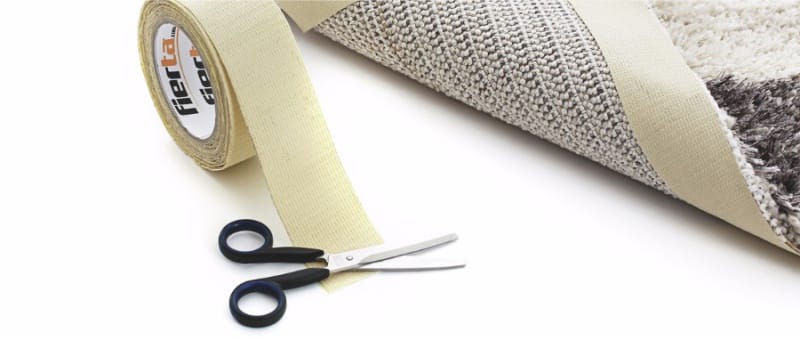
- Keep in mind that the wool carpet for the first six months will "shed" - this is a normal process for all new products. Be patient and clean the carpet for the first time only in a dry way. And not with a vacuum cleaner, but with a non-rigid brush or a broom.
- For any carpet dry cleaning is preferable to wet. But since we are talking about a kitchen carpet, we cannot do without wet cleaning. If you want the product to serve for a long time, then wash it not with a vacuum cleaner, but by hand using special tools with a soft brush.
- Once a year, the carpet can be knocked out in the snow or dry-cleaned with a turbo brush.
- If you want to remove the carpet, then it should be rolled up and not folded.
- Products woven from natural materials, do not forget to treat insect repellents.
- Choosing a tablecloth in 6 steps
- We decorate the walls with plates - a master class and 100 photos for inspiration
- Draw and paint the walls of the kitchen like a pro
- 10 wall decoration ideas for the kitchen
- Ideas and workshops on sewing tacks with your own hands


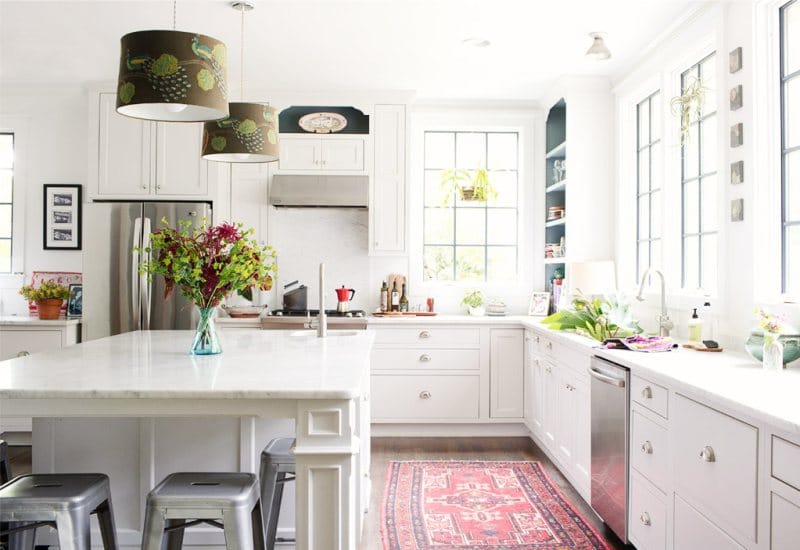



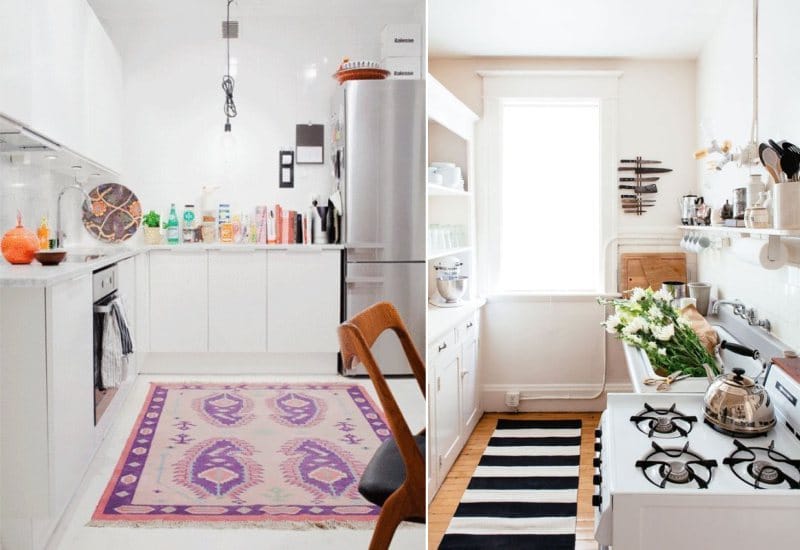
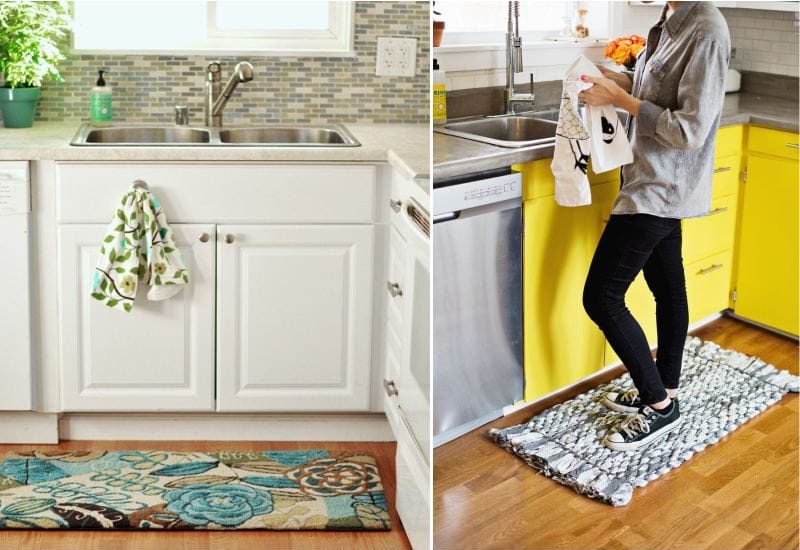
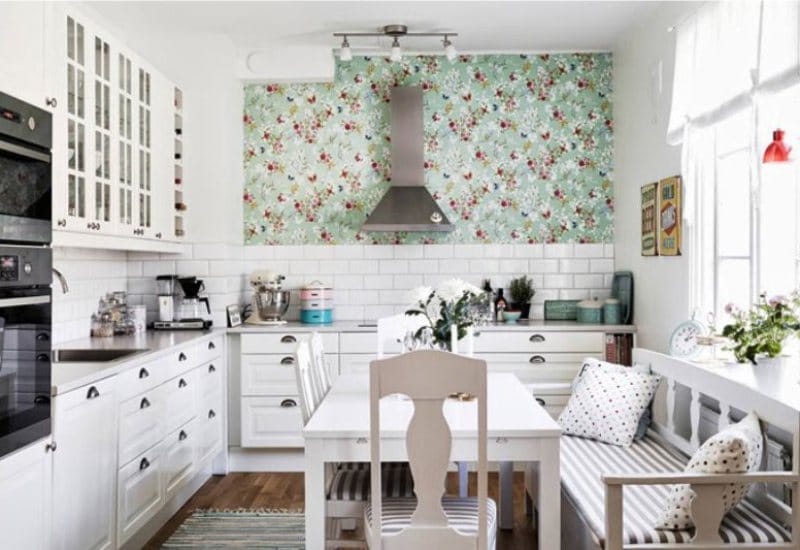
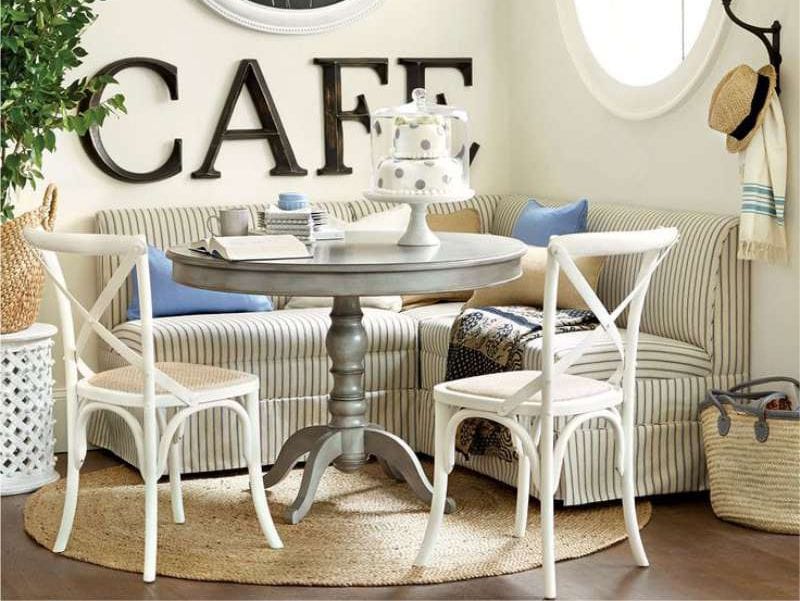
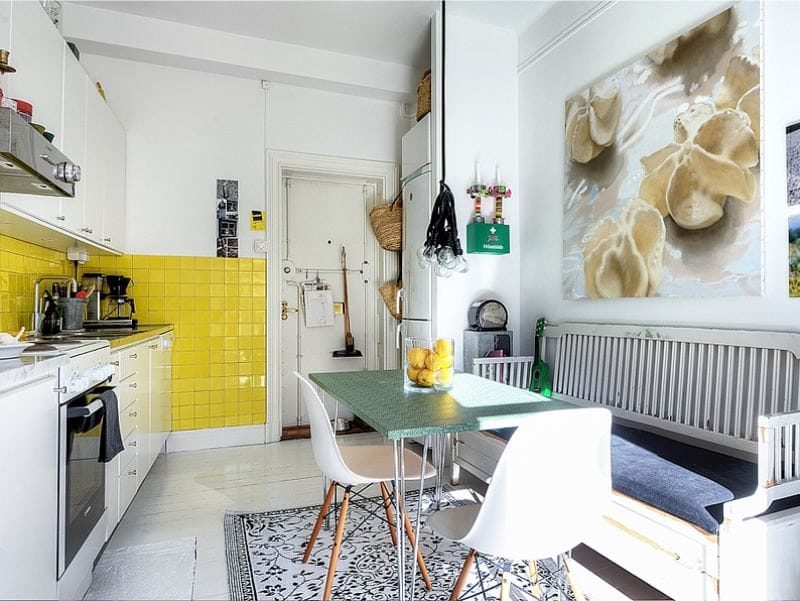
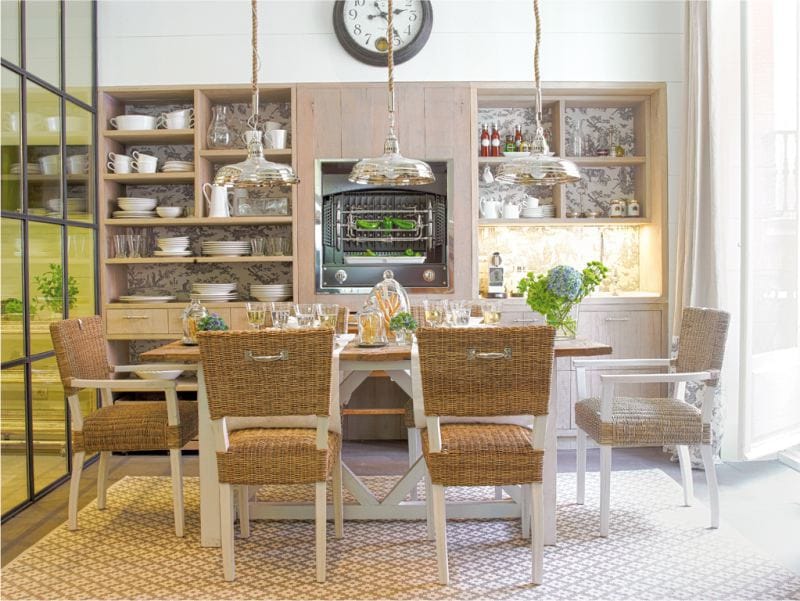

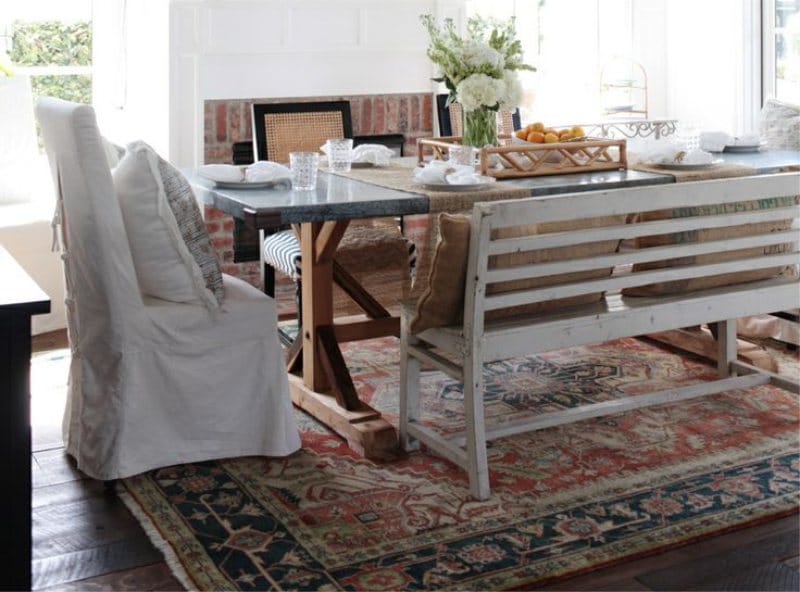
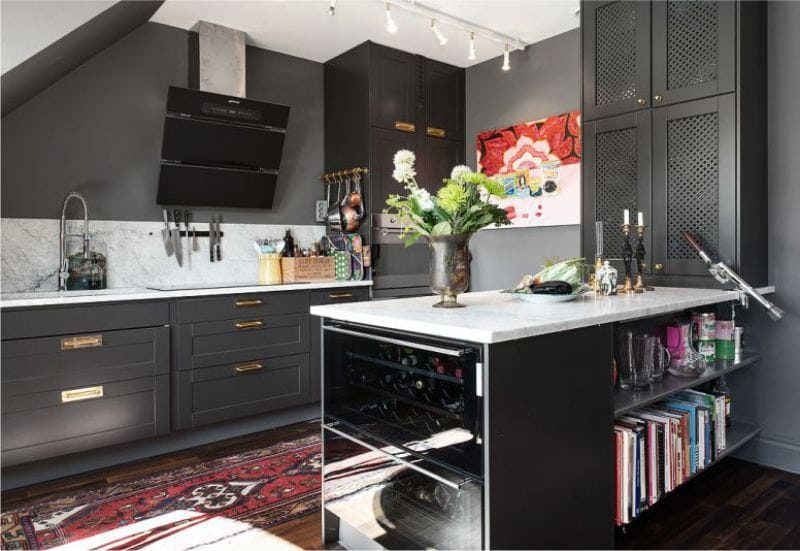
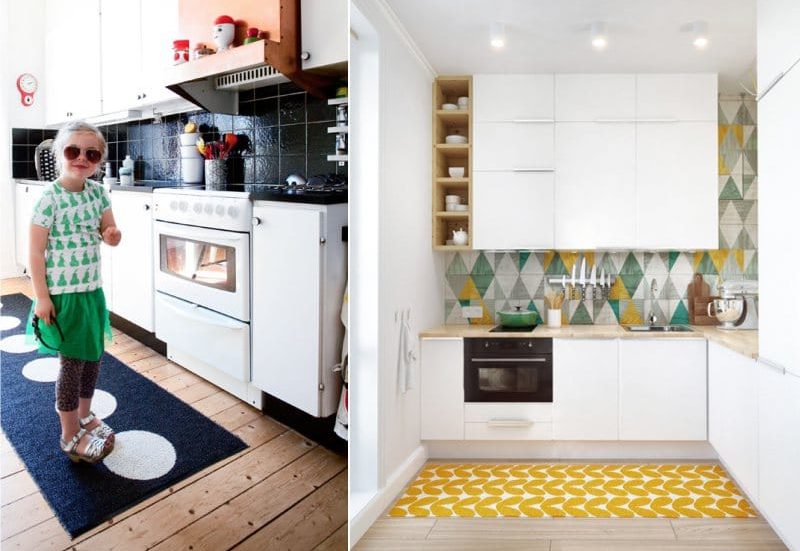
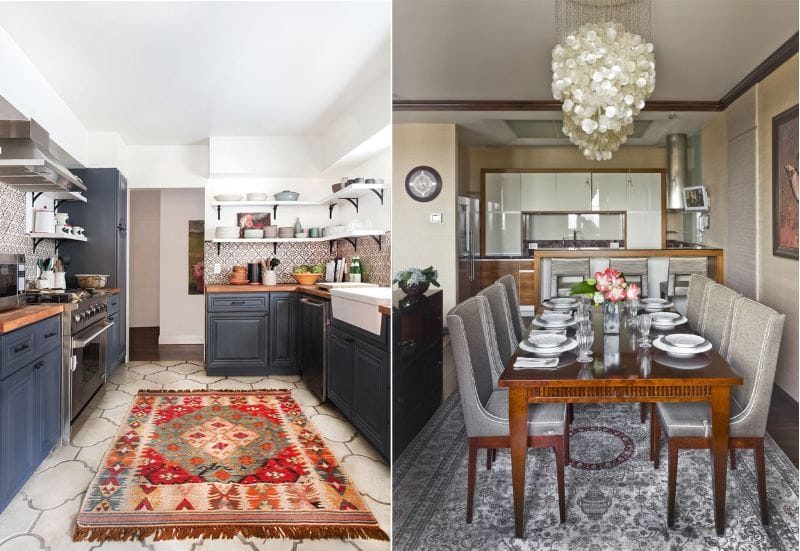
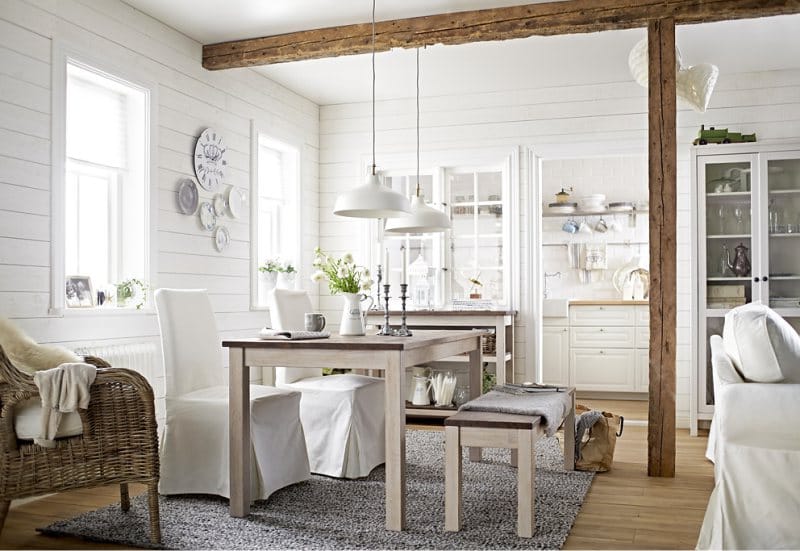
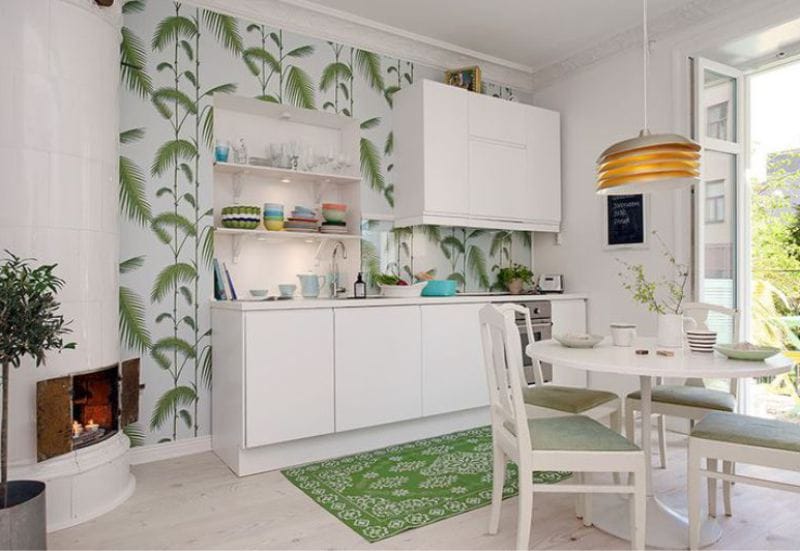
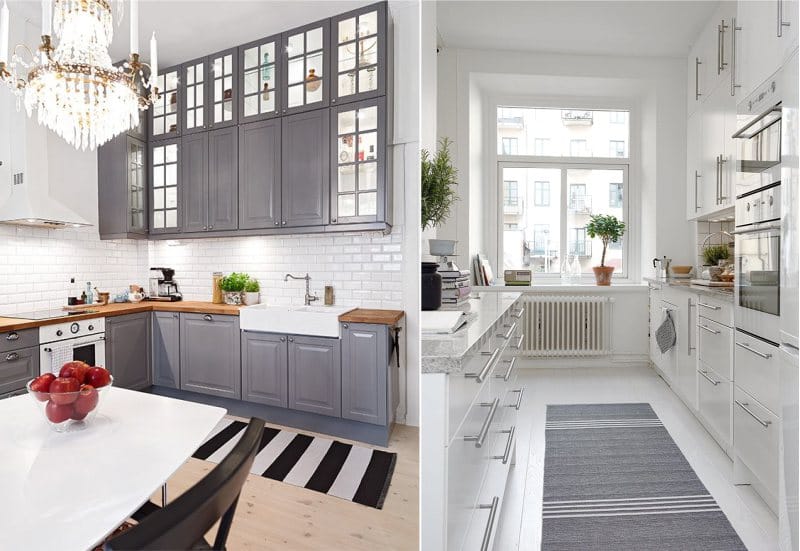

 (Rate the material! Already voted:17 average rating: 4,53 from 5)
(Rate the material! Already voted:17 average rating: 4,53 from 5)
And who thinks the mat is suitable for the kitchen? How durable and practical is it and does not lose its appearance? Or still choose another coverage?